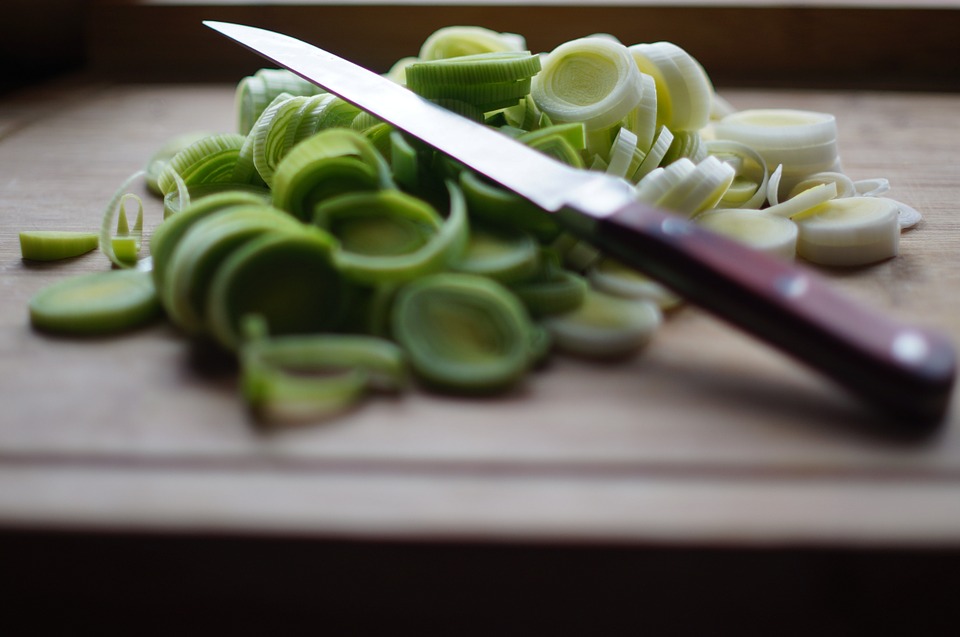5 Types of Commercial Kitchen Knives

 There may not be a more useful tool in the kitchen than a knife. When it comes to different types of knives used in commercial or home kitchens, there is no shortage of variety!
There may not be a more useful tool in the kitchen than a knife. When it comes to different types of knives used in commercial or home kitchens, there is no shortage of variety!
Regardless of what type of dishes your commercial kitchen is serving – from soups and salads to pizza to steaks, various kitchen knives hold a special place in the hearts of all chefs. Some of these knives have hardly changed in hundreds of years; others have been developed more recently to suit the needs of professional chefs.
Here are 5 popular types of commercial kitchen knives:
1. Chef’s Knife
The classic chef’s knife, or cook’s knife, is the quarterback of the kitchen. Its blade is wide near the base and curves upward to form a point at the tip. The curved blade allows for a back-and-forth rocking motion that is ideal for chopping and mincing. The thick, sturdy handle provides weight and strength that helps cut through the thickest items.
The chef’s knife is useful for a variety of kitchen tasks – including cutting, slicing, chopping and mincing. Lengths generally vary between 6 and 12 inches (the length generally refers to the blade only), with shorter blades suiting smaller-handed cooks and longer blades being more difficult to control.
2. Paring Knife
When the chef’s knife is too large for a particular task, the paring knife comes through flawlessly. With blades ranging from 2 to 4.5 inches in length, think of the paring knife as an extension of your fingers. Its semi-curved blade is perfect for peeling and shaping and straight-edged paring knifes are ideal for slicing.
These knives are perfect for peeling apples, mincing garlic, coring tomatoes, trimming asparagus or removing a nasty blemish from a peach or potato.
3. Carving Knife
Also known as a slicing knife, this type of cutlery tends to make an appearance around the holidays – when ham, turkey, geese and other traditional favorites are being prepared. With long blades that run anywhere from 8 to 14 inches, carving knives are designed to slice hams and carve roasts, but are also great for opening a melon.
Many carvers have hollowed, recessed edges along the blade, creating tiny air pockets that prevent slices from sticking to the blade. When a carving knife is present, a carving fork is generally nearby as well. These sturdy forks help hold meat securely in place when being sliced.
4. Cheese Knife
Now we get to a more specialized kitchen utensil – the cheese knife. While only used for a single purpose, every chef needs a good set of cheese knives.
Cheese knives are often sold in sets as the blades come in a variety of shapes. Each piece has a special purpose – spreading soft cheeses with a curved edge or cutting hard cheeses with a semi heart-shaped blade. The blades have varying thicknesses for harder and softer cheeses. It’s also common to see holes in the middle of blades designed for soft cheeses that prevent any sticking after slicing.
5. Crinkle Knife
Another specialty knife, the crinkle knife comes in many shapes and sizes. Some include a handle on top that are ideal for chopping, others feature the traditional knife handle.
Either way, these elegantly designed knives sport a wavy blade that is used for effortless cutting, peeling and carving of veggies and potatoes. When you see sliced pickles with grooves in them, they were probably cut with a crinkle knife. These knives also add to the ease with which you can creatively peel fruits, veggies and garnishes.
If you aren’t familiar with the countless variety of kitchen knives – this article just scratched the surface! There are also fillet knives, steak knives, Santoku knives and countless others.
CPS helps restaurant and commercial kitchen owners keep their business running by providing prompt service and OEM parts. Contact us today to schedule service or shop for kitchen knives and many other parts in our extensive online inventory!




